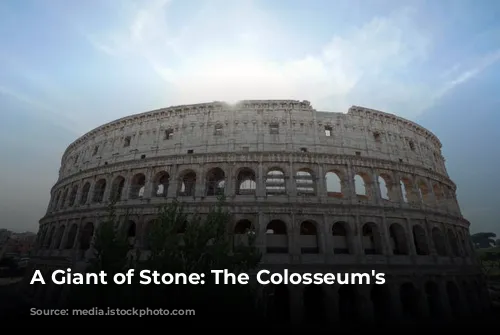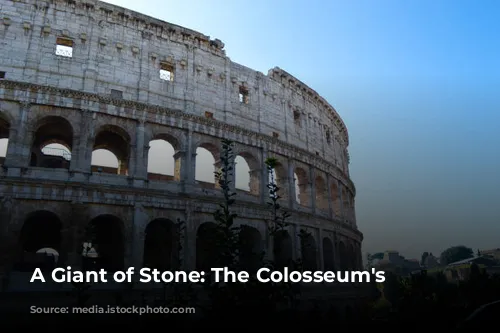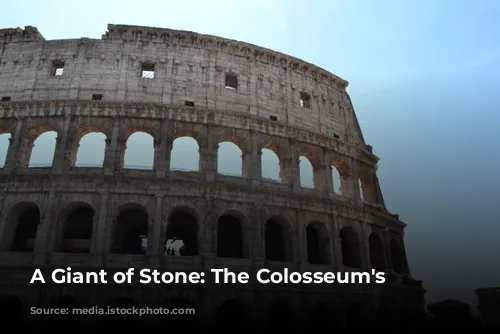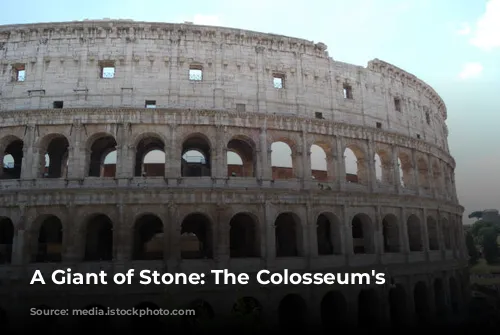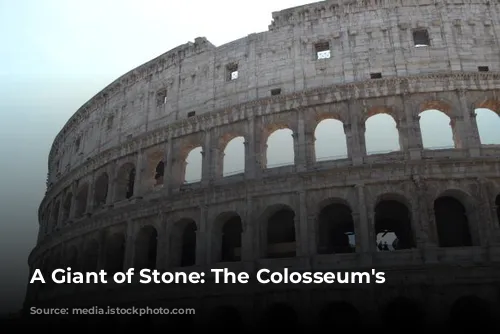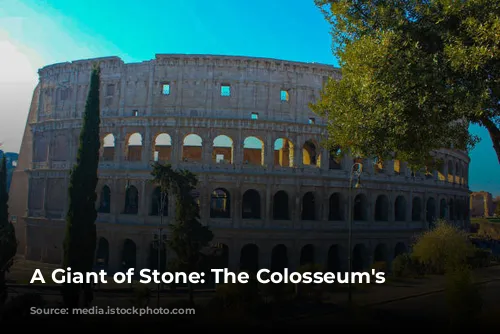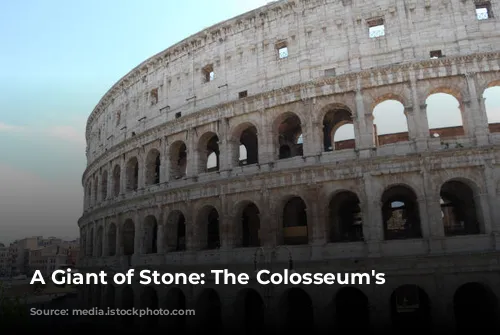The Colosseum, also known as the Flavian Amphitheatre, is a monumental marvel of the ancient world, standing tall in the heart of Rome. It’s not just the largest amphitheatre ever built, but also one of the most famous structures on Earth. This majestic edifice was begun by Emperor Vespasian of the Flavian dynasty and completed by his son Titus in 80 AD.
An Epic Opening
The Colosseum’s grand opening was a spectacle that lasted 100 days! Imagine thousands of animals, some as many as 5,000 according to the historian Suetonius, battling in the arena. But the most unforgettable event was the naumachia, a real sea battle recreated in the arena, which was filled with water for the occasion. It was a breathtaking display of Roman power and engineering.
Why Colosseum?
You might wonder why it’s called the Colosseum. The name first appeared in a medieval prophecy by the Venerable Bede, who wrote, “Rome will exist as long as the Colosseum does; when the Colosseum falls so will Rome; when Rome falls so will the world.” It’s believed he got the name from the enormous statue of Emperor Nero, known as “the Colossus”, which stood next to the amphitheatre. It was a 35-meter-tall giant that has since been completely destroyed.
A Masterpiece of Roman Architecture
The Colosseum is an imposing structure, originally completely covered in white travertine stone slabs. It’s elliptical in shape to hold more spectators and boasts four levels, each with 80 arches. The second and third levels were adorned with massive statues.
The Romans were masters of the arch, a technique that allowed them to effectively distribute weight and build massive structures. They used arches for everything from aqueducts to temples, and the Colosseum is like a stack of aqueducts!
Time’s Toll and Transformation
Today, the Colosseum is a shell of its former glory. We see only the skeleton of the greatest arena in the ancient world, as much of its outer wall has crumbled over time. During the Middle Ages, when the Colosseum was no longer used, it was quarried for building materials. The holes in its columns are a testament to this, as they were made to extract lead and iron used to construct buildings like the Barberini Palace, Piazza Venezia, and even St. Peter’s Basilica.
An Arena for Entertainment and Power
The Colosseum could hold up to 70,000 spectators! The seating was carefully arranged to ensure everyone had a good view. The Romans were seated according to their social status, much like modern theaters. Senators, vestals, and priests, along with the emperor, sat in the front row, while commoners occupied the upper tiers, with separate sections for men and women.
The Colosseum was like a modern sports stadium, with a clever roof covering called the Velarium. It was a huge linen tarpaulin, held in place by a system of ropes, winches, and poles. It took 100 sailors from the Imperial fleet to move it, their synchronized movements directed by the beat of a drum.
Gladiators and Spectacles
The Colosseum’s arena, once covered in brick and wood, has disappeared. In its place, we see cellars that housed equipment used for the games, including lifts and hoists that were used to bring animals and gladiators up through trapdoors in the arena floor.
The Colosseum was a stage for a variety of shows, from gladiatorial battles to wild animal hunts. The animals, even those that weren’t killed, were sometimes surrounded by scenery that made the arena seem like a real forest. Some events were less violent, like the display of an elephant that could write words with its trunk.
The Blood and Glory of Gladiators
The gladiators were the Colosseum’s stars, battling in front of a roaring crowd. They came from different walks of life, including prisoners of war, paupers, and even those seeking fame and fortune. Gladiators were highly skilled fighters, with their own unique styles and weapons.
The fate of a defeated gladiator rested in the hands of the emperor, whose thumbs up signified life and thumbs down signified death. The crowd was a vital part of the spectacle, cheering for their favorites and influencing the emperor’s decision.
The Enduring Legacy of the Colosseum
The Colosseum’s grandeur is still awe-inspiring today. It is a reminder of Rome’s past and its lasting impact on civilization. It’s a monument to human ingenuity, engineering skill, and the power of entertainment. The Colosseum is truly a ghost of old Rome, floating over the city, its presence forever etched in the minds of visitors from across the globe.
